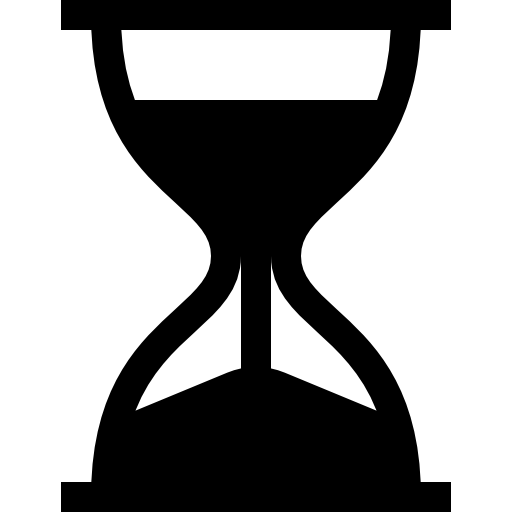Time Converter

About the Time Converter Tool
The Time Converter tool is an incredibly versatile and essential resource for anyone who needs to convert between various units of time measurement accurately and efficiently. Time, one of the most fundamental concepts in both everyday life and scientific study, is measured in different units depending on the scale and context of the task at hand. Whether you’re tracking the duration of a project, calculating the time for a scientific experiment, or simply trying to understand the relationship between different time units, this tool is designed to make your conversions simple and precise. With support for a wide range of units, including Nanoseconds (ns), Microseconds (μs), Milliseconds (ms), Seconds (s), Minutes (min), Hours (h), Days (d), Weeks (week), Months (month), and Years (year), this tool is indispensable for professionals, students, and anyone who deals with time calculations regularly.
Time measurement is a crucial aspect of countless activities and industries. In the fast-paced world of technology, where every nanosecond can make a difference, or in long-term project planning where time spans years, having the ability to convert time units quickly and accurately is essential. The Time Converter tool simplifies this process, allowing you to focus on the task at hand rather than getting bogged down in manual calculations. Whether you’re working in software development, project management, academic research, or just trying to sync schedules across different time zones, this tool ensures that your time conversions are correct and reliable, helping you to plan and execute your tasks more effectively.
Units of Time
Time is measured in various units depending on the scale and application, from the smallest fractions of a second to years and beyond. The Time Converter tool supports a wide array of these units, enabling you to switch between them effortlessly:
- Nanoseconds (ns): A nanosecond is one billionth of a second. This unit is used in contexts where extremely short time intervals need to be measured, such as in computing, telecommunications, and electronics, where processing speeds and data transfer rates are measured in nanoseconds.
- Microseconds (μs): A microsecond is one millionth of a second. It is commonly used in scientific research, engineering, and electronics, where precise measurements of short time intervals are crucial, such as in timing circuits and high-speed photography.
- Milliseconds (ms): A millisecond is one thousandth of a second. It is frequently used in everyday applications, such as measuring response times in computing, the speed of processes in engineering, and in various fields of science where small time intervals need to be tracked.
- Seconds (s): The second is the base unit of time in the International System of Units (SI) and is the most widely used unit for measuring time. It serves as the foundation for other time units and is used universally in every aspect of daily life, science, and industry.
- Minutes (min): A minute is equal to sixty seconds. It is a common unit of time used in everyday activities, such as cooking, scheduling, and in many scientific contexts where time needs to be measured on a human scale.
- Hours (h): An hour is equal to sixty minutes. It is a standard unit of time used in daily life, business, and industry to measure the duration of activities, work shifts, travel, and more.
- Days (d): A day is equal to twenty-four hours. It is used as a basic unit of time in calendars and is essential for scheduling, planning, and measuring longer periods of time in both personal and professional contexts.
- Weeks (week): A week consists of seven days. It is a standard time unit used in calendars, scheduling, and planning, particularly in business, education, and project management.
- Months (month): A month is approximately thirty days, varying slightly depending on the specific month and year. Months are a standard unit of time used in calendars and for planning long-term projects, budgeting, and more.
- Years (year): A year consists of twelve months and is the standard unit for measuring long periods of time. Years are used in calendars, age calculation, historical records, and in planning and forecasting in various fields, from finance to science.
Each of these units has its specific applications, depending on the scale and context of the time being measured. The Time Converter tool allows you to easily switch between these units, providing accurate and reliable conversions that are essential for ensuring precision in your time-related tasks.
Benefits of This Tool
The Time Converter tool offers several significant benefits that make it an indispensable resource for professionals, students, and anyone dealing with time measurements:
- Easy Conversion Between Different Time Units: Whether you’re converting seconds to nanoseconds, minutes to hours, or any other combination, this tool simplifies the process, allowing you to focus on your work without worrying about complex calculations.
- Quick and Accurate Results: Precision is crucial when it comes to time measurements, especially in fields like computing, engineering, and project management. The Time Converter tool provides fast and precise conversions, ensuring that your measurements are reliable and can be trusted for critical applications.
- User-Friendly Interface: Designed for ease of use, this tool features an intuitive interface that makes conversions straightforward. Whether you’re a seasoned professional or a student learning about time, you’ll find this tool accessible and efficient.
How to Use This Tool
The Time Converter tool is designed to be simple and efficient, making it easy for anyone to perform conversions quickly:
- Select the Source Unit: Start by choosing the unit you want to convert from the dropdown list. The tool supports a wide range of time units, including seconds, minutes, hours, and more.
- Select the Target Unit: Choose the unit you want to convert to from the dropdown list. This flexibility allows you to customize your conversion to match the specific needs of your project.
- Enter the Value: Input the time value you wish to convert into the source value field. The tool allows for precise input, ensuring that your conversion is accurate.
- View the Converted Value: The tool will instantly display the converted time in the target unit. This immediate feedback allows you to apply the conversion to your work right away, whether you’re scheduling, planning, or analyzing time data.
FAQs
- Q: What units can I convert between?
A: You can convert between Nanoseconds, Microseconds, Milliseconds, Seconds, Minutes, Hours, Days, Weeks, Months, Years, and more. The tool covers a wide range of time units to meet your specific needs. - Q: Is this tool free to use?
A: Yes, this tool is completely free to use. There are no hidden fees or subscriptions, making it accessible to anyone who needs to perform time conversions. - Q: How accurate are the conversions?
A: The conversions are highly accurate, based on standard formulas used in scientific and mathematical practices. You can trust the results for any professional or personal project. - Q: Can I use this tool on mobile devices?
A: Yes, the tool is fully responsive and works seamlessly on all devices, including smartphones and tablets. This means you can perform time conversions anytime, anywhere, whether you’re in the office, on the go, or working remotely.
The Time Converter tool is just one of many free resources available to help you with your measurement and conversion needs. For a full range of tools designed to make your tasks easier and more efficient, visit ToolStack Central. Whether you’re a professional in project management, a student studying physics, or someone who needs to perform time conversions for personal planning, our tools are here to support your efforts with accuracy and convenience.

